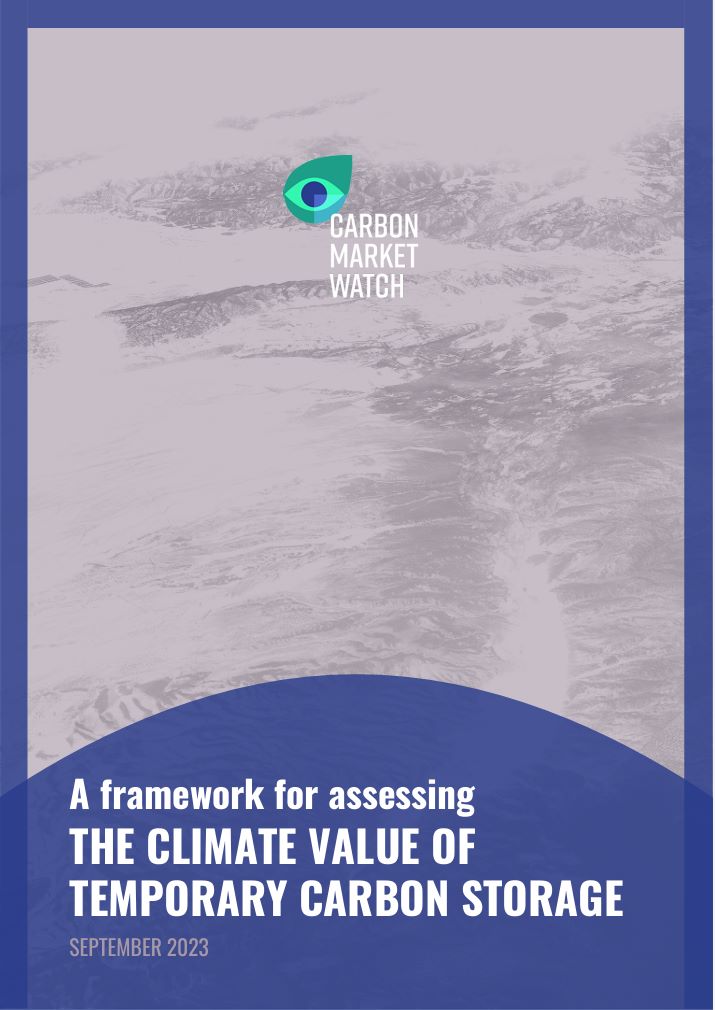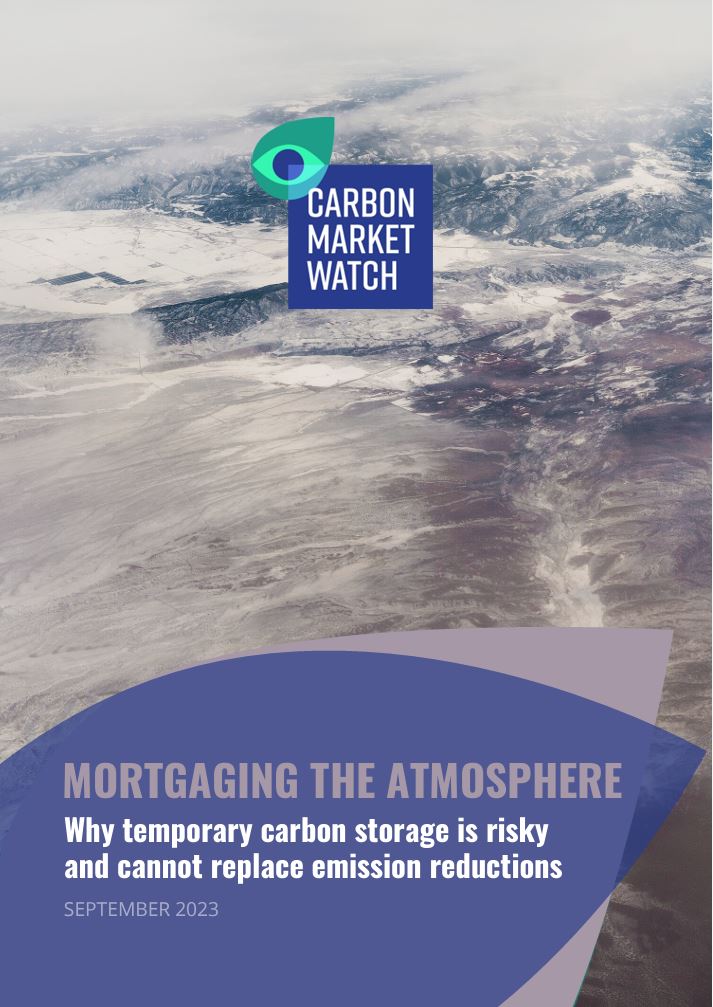Storing carbon temporarily is being touted as a tool for tackling the climate crisis. But unless the CO2 is stored for over a century, this “solution” can do more harm than good, despite the co-benefits to ecosystems.

The debate around temporary carbon storage puts me in mind of young children convinced they can catch the air with their bare hands, only for it to escape back into the atmosphere.
Unfortunately, those making the case for storing carbon temporarily as a solution to tackle global heating are smart adult policymakers and company executives who have decided, like the Jumblies, that going to sea in a sieve is a wise move during this climate emergency.
Sadly, science is not on their side. This is confirmed by the latest Carbon Market Watch study conducted by prominent climate economist Danny Cullenward of the Kleinman Centre for Energy Policy at the University of Pennsylvania.
Bad timing
The underlying snag is a fundamental mismatch in timescales. When humans burn fossil fuels, which were stored under the surface of the Earth for millions of years, the resulting emissions hang in the air for centuries and have a permanent impact on the atmosphere.
For carbon storage to be physically equivalent to emissions, the CO2 would need to be stored for many thousands of years, Cullenward points out in his paper.
This basic physical reality restricts the role of temporary storage, at best, to a peripheral one. At worst, it can actually worsen the climate crisis if the stored carbon is used to offset today’s emissions but is released before temperatures have stabilised enough to keep global heating within relatively safe limits.
So why is the popularity of this ultimately false solution growing so rapidly?
The reason is not environmental but primarily economic. Some businesses prefer the status quo to reducing their own emissions. Those who wish to defer, delay or even renege on their responsibilities prefer to dress up climate inaction as “cost effective” climate solutions, even if these solutions ultimately solve very little to nothing.
Burdening future generations
When people think of ‘temporary’, they tend to think in terms of days, months or years. However, Cullenward’s research finds that for temporary storage to play a supporting role in tackling the climate crisis, the stored carbon would need to be, based on humanity’s current trajectory, kept out of the atmosphere for significantly more than a century. This timespan expands the longer humanity dithers and delays climate action.
With a generation typically defined as being between 20 and 30 years, this means that the storage would need to be guaranteed for at least three to five generations. Safeguarding carbon stored for multiple generations, particularly in volatile ecosystems, is no straightforward matter and no effective mechanisms exist for guaranteeing and enforcing long-term liability.
More importantly, it burdens future generations with a responsibility they did not choose. Our excessive emissions today are already costing the very young and unborn a great deal. In order to quite literally fuel our lifestyles today, we are gradually burning their prospects for a comfortable life.
If these temporary carbon stores fail to last for well over a hundred years, it would be the equivalent of setting up a trust fund for our children or grandchildren, only for the bank to go bankrupt.
Say no to offsetting
To avoid the pitfalls of temporary storage, Cullenward calls on policymakers to listen to the science. “To accurately recognise the limited climate benefits of temporary carbon storage activities, policymakers must prohibit their use as carbon offsets and set minimum storage durability requirements,” he urges.
In the European Union, policymakers must strive to fix the proposed Carbon Removal Certification Framework (CRCF) and close the loopholes that would allow any kind of removals, especially risky temporary removals, being used to supposedly compensate for emissions that will haunt us for centuries to come.
As we have pointed out at CMW before, the atmosphere cannot be cheated. By misusing temporary storage, we would only be cheating ourselves and future generations.
Further reading








